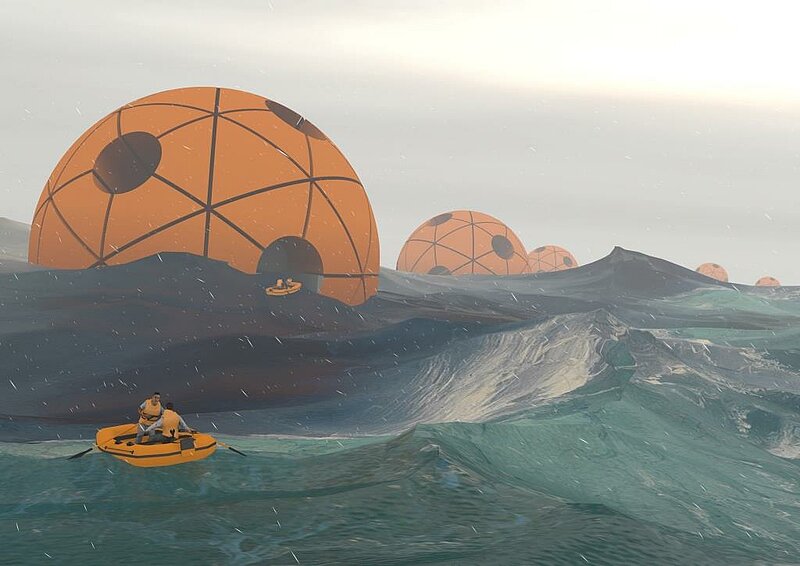Hope line Points of rescue at sea
- Year2015
- LocationSea
Sea is the power which excites, scares and attracts people - all at the same time. It is however still unconquered and unknown for people.
There are more and more projects connected with “Big water” construction appearing recently and some of them are already realized. The main concept of these projects is human integration into the aquatic environment. The idea of the need in new human habitat is becoming more popular.
Nevertheless, water element still wrecks havoc in the sea and on the land. That is why the main goal to be set before exploring new territories is to ensure safety.
Hope Line project solves this problem. The idea is to create “floating islands” 2-3 km from each other on the most profitable routes of sea and ocean communication. These “floating islands” are intended to be rescue items for crews during shipwrecks. These “Hope Points” are multilayered objects the outer part of which is sphere with a diameter of 80 000 mm. It is kept afloat on the principle of an ocean buoy. The waterline is slightly below the middle of the sphere. The displacement of the whole object was accurately counted.
There are tunnels placed across the surface of the sphere - entries. Four of these entries are located near the surface of the water for those who head there on the lifeboats or by swimming, another four are on the top side of the sphere for air rescue operations and repair if needed, four more entries are lower surface for underwater access. Diameter of each tunnel is 15 800 mm. The inner part is divided into technical compartment and living space which comprises 3 floors. The first floor, with an area of 140 square meters is located far above the waterline, and serves to accommodate possible victims. This floor consists of residential units, provided with necessary equipment to perform first aid before rescuers arrival. The second floor is also designed for survivals, it has living cells for their placement and computers to report location. The top, last sector has 4 exits to carry out air rescue operations. There is a wave power conversion system in the technical compartment designed to provide electrical power production for lighting and computers.
The outer spherical shell is a large system consisting of 2 kinds of metal hollow modules interconnected with powerful rod attachment fittings. This allows to save time and money during the production of parts and their assembly. Six of the lowest modules with total volume of 2648 cubic meters are not hollow and serve as a stabilizing ballast during a wave rolling.







